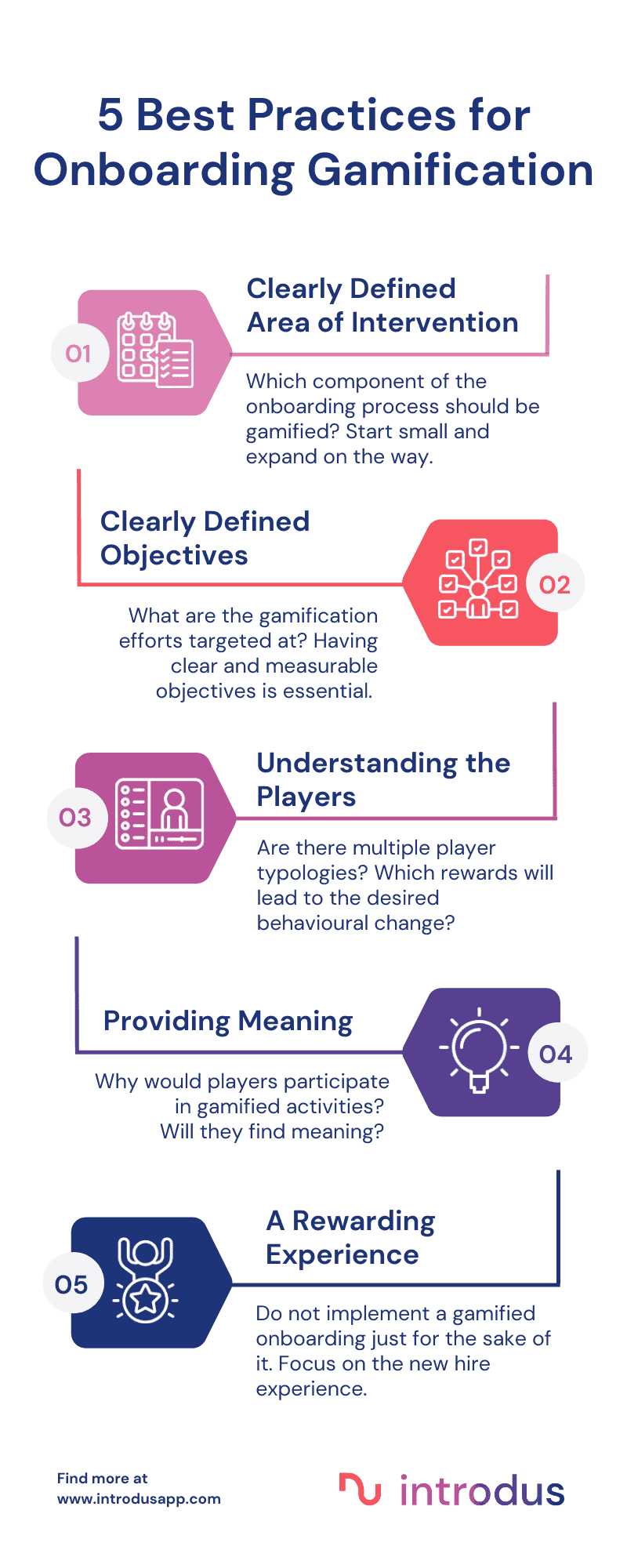Why Use Gamification in Onboarding? Advantages of a Gamified Onboarding
As a new hire, your desire is beyond a paycheck, but a system that allows you to be more involved and feel a sense of purpose in a workplace. A gamified onboarding embraces technology to create an interactive and exciting journey with a game-based approach to achieve your onboarding objectives and derive a mastery of your new job.
Increased Motivation
Getting to know there are rewards and incentives for successful onboarding can motivate you to put in your best during the onboarding exercise. No doubt, this results in better productivity and an enhanced capacity to fulfill the desired job expectations.
However, you should know the rewards and incentives might not be financial rewards. They could be in another form, such as points and badge awards for completing assessments and tasks during your onboarding programme. Badges are linked to a form of feedback called positive reinforcement. Through badges your employer rewards the efforts of new employers and infuse the task with meaning. This will motivate you to continue engaging and completing your onboarding activities.
The opportunity to get rewards and recognition for onboarding activities can lead to increased new hire motivation. You can, for example, receive a badge for completing all the paperwork. Additionally, you can obtain a new one for having completed all introductory meeting with your team members.
Another example would be implementing level up challenges throughout the entire onboarding journey. For example, your onboarding plan can follow a 30 60 90 structure. So, you level up after 30 days, each level bringing new challenges and more complex tasks.
Enhanced Learning
The task of settling down quickly in a workplace revolves around the training your employer offers you during your first days at work. Simply becoming familiar with the activities of a new company is not enough for productive work. You will still require training to understand the operational procedures of the company thoroughly.
In your onboarding process, how you are trained on the job roles and responsibilities says a lot. You will be motivated and delighted if the training procedure is fun, rewarding, and interactive. This is where gamified onboarding comes in. Learning through play, activities and rewards will engage you more and will also encourage more attention to details.
On the other hand, if the experience is overwhelming and boring, you will find the job uninteresting. As a consequence, getting acclimated to the new work environment becomes a daunting task.
You can read on our blog HR more about the benefits of gamification training.
